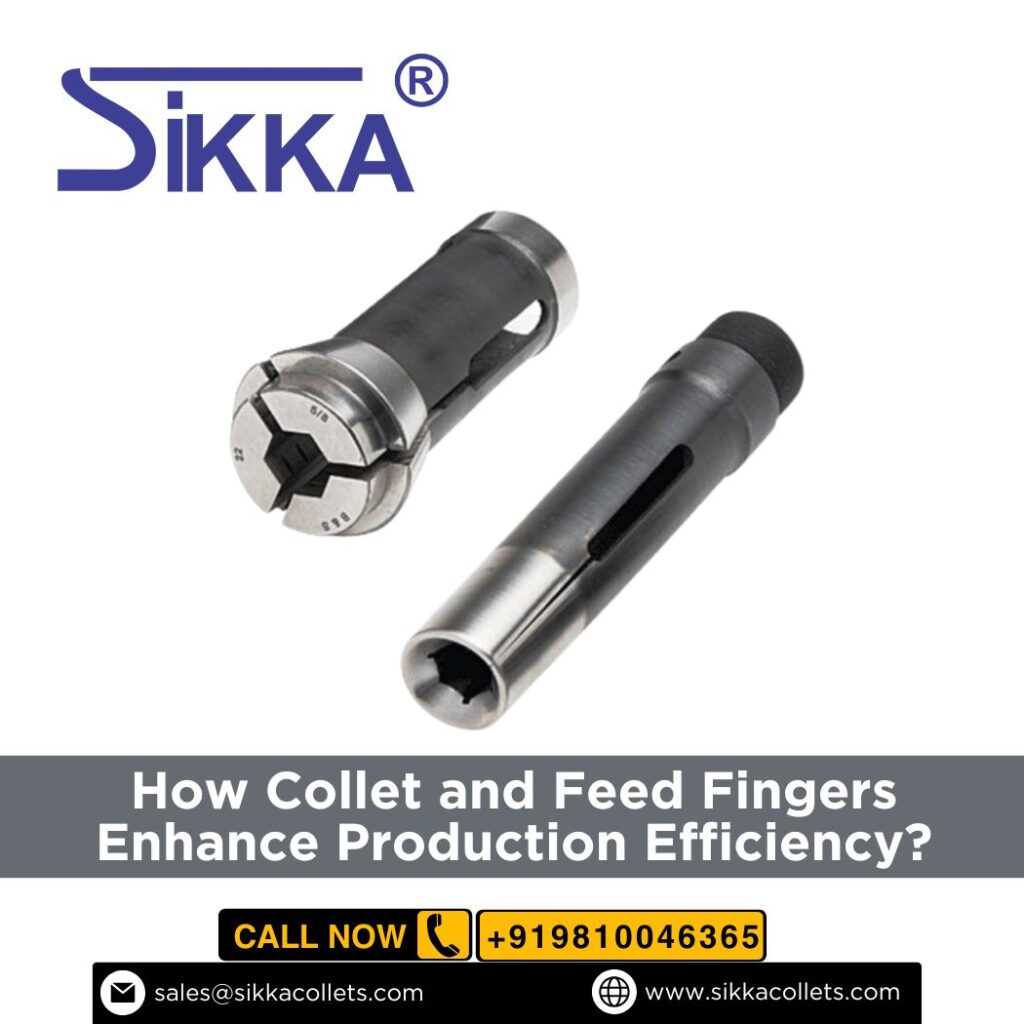Feed fingers play a crucial role in the precision of machining operations, especially in the context of CNC machines, automatic lathes, and other automated manufacturing equipment.
These components are responsible for guiding the workpieces into the machine tool, ensuring smooth and uninterrupted movement throughout the manufacturing process.
Choosing the right feed finger material is vital for optimizing machine performance, minimizing wear, and improving production efficiency.
With a wide array of materials available, selecting the ideal Feed Fingers for your machine can be a challenging task.
In this blog, we will explore the factors that influence the choice of feed finger materials and highlight the options available to you.
Understanding Feed Fingers and Their Role
Feed fingers are part of the feeding mechanism in machines like automatic lathes, turning centers, and multi-spindle machines.
They are designed to push or guide the workpiece into the tooling area for processing.
Their purpose is to provide precise and consistent movement, reducing the chances of operational errors and material wastage.
The feed fingers should be sturdy, durable, and resistant to wear and tear because they work under high-speed, high-torque conditions.
Key Factors to Consider When Choosing Feed Finger Materials
When selecting feed finger materials, several factors should be considered to ensure the feed fingers can withstand the operating conditions while ensuring the best performance.
Here are the critical aspects to focus on:
1. Durability and Wear Resistance
One of the most important features of feed fingers is their ability to endure constant pressure and friction. The right material should have excellent wear resistance to ensure long-lasting performance.
Feed fingers that are made from materials with high hardness can withstand continuous contact with the work pieces and the machine components.
2. Corrosion Resistance
Feed fingers may come in contact with fluids such as cutting oils, coolants, or even moisture in some environments.
Choosing a material that resists corrosion is essential to prevent degradation and ensure the longevity of the component. Corrosion resistance also reduces maintenance costs and downtime.
3. Strength and Impact Resistance
The material must be strong enough to handle the mechanical stresses applied during the feeding process.
It should also be impact-resistant to avoid breakage or deformation, especially under heavy load conditions.
4. Temperature Resistance
Machines that operate in high-temperature environments, like metal cutting or welding, demand feed fingers made from materials capable of withstanding intense heat.
These materials must maintain their structural integrity even under extreme temperatures and constant exposure to heat.
The best feed finger materials for such applications are those that can handle temperature fluctuations without warping, softening, or losing strength over time.
Common Feed Finger Materials
Feed fingers are available in a variety of materials, each with its own set of advantages. Here are some of the most common materials used:
1. Steel
Steel is one of the most widely used materials for feed fingers due to its high strength and durability.
Carbon steel and stainless steel are both popular choices, with stainless steel offering superior corrosion resistance.
Steel feed fingers are ideal for most machining operations and are known for their ability to endure significant wear and tear.
2. Carbide
For applications requiring enhanced hardness and wear resistance, carbide feed fingers are a popular choice.
Carbide is extremely hard and can handle high-speed and high-precision operations without significant wear.
However, carbide feed fingers can be more brittle than steel, so they need to be used carefully to avoid breakage.
3. Aluminium
Aluminium feed fingers are lighter and can be ideal for applications where weight reduction is necessary.
While aluminium doesn’t offer the same wear resistance as steel or carbide, it is an excellent choice for machines with less demanding operations, where weight and cost-efficiency are priorities.
4. Plastic or Composite Materials
In some low-speed, low-pressure applications, plastic or composite feed fingers can be used.
These materials are lightweight and resistant to corrosion but lack the mechanical strength and wear resistance required for high-performance operations.
Why Sikka Collets & Accessories Is Your Ideal Partner?
At Sikka Collets & Accessories, we understand the importance of choosing the right materials for your feed fingers.
We offer a wide range of high-quality components, including feed fingers, that are designed for optimal performance and durability.
Our feed fingers are manufactured using materials that meet the rigorous demands of modern machinery and machining environments.
Whether you require precision feed fingers made from steel, carbide, or custom composites, Sikka Collets & Accessories provides reliable and cost-effective solutions to suit your machine’s specific needs.
We specialize in a variety of collets and accessories, including Traub collets, 5C collets, and DIN collets, which can be combined with the right feed finger material for enhanced machine performance.
Our products are engineered to meet the needs of both small-scale operations and large-scale industrial applications.
Conclusion
Choosing the right feed finger material is essential for ensuring optimal machine performance and longevity. The ideal material should be durable, wear-resistant, corrosion-resistant, and capable of withstanding the specific demands of your machining process.
By considering these factors, and by partnering with trusted suppliers like Sikka Collets & Accessories, you can ensure that your feed fingers provide the accuracy and reliability you need.
Always select the feed fingers materials that align with the specific requirements of your machine to minimize downtime and maintenance costs, and to achieve superior results in your machining processes.
Sikka Sales Corporation
Address :- 31/3f, Street No-1, Anand Parbat, Industrial Area, New Delhi-110005(INDIA)
Phone : +91-9810046365
Google Map Location Listing Of Best Collets Manufacturer – https://maps.app.goo.gl/iU6Ne2WKYp5DRZkP6


